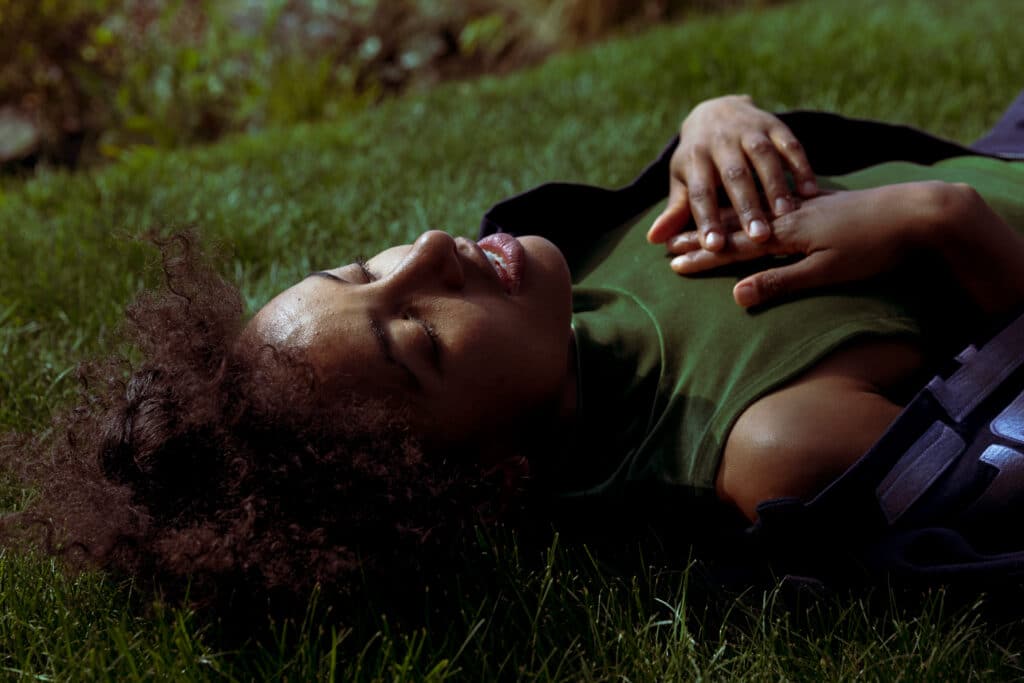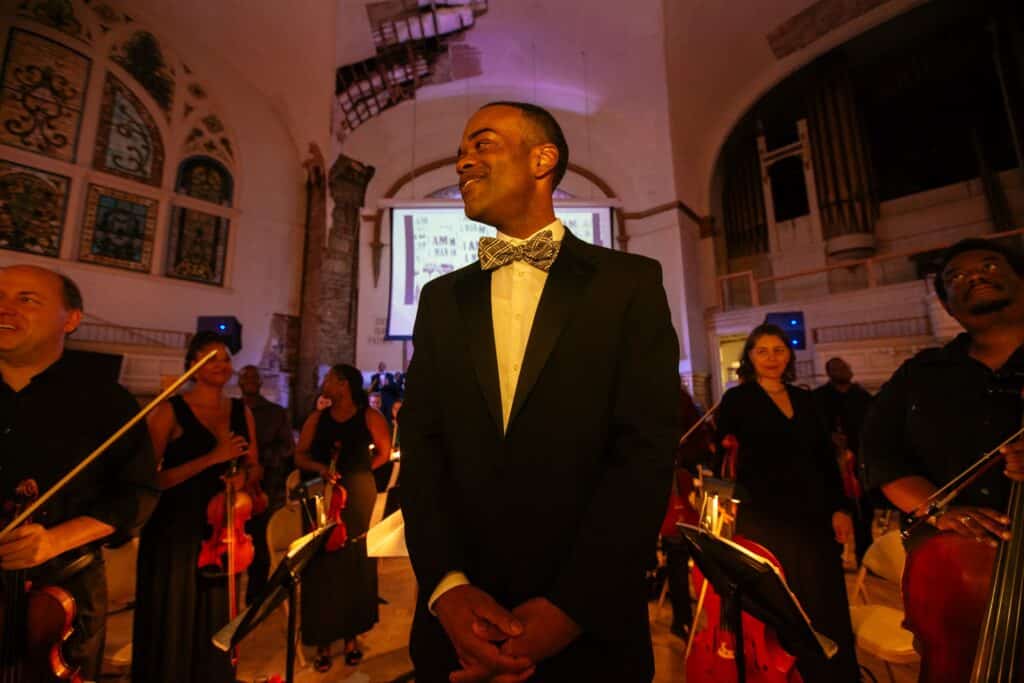What I Learned from Mary Lou

A video recently circled on social media of pianist and composer Mary Lou Williams in an interview. A journalist asks her to create an impromptu big-band arrangement of “Honeysuckle Rose.” She nonchalantly calls out the various sections—“Trumpets! Saxophones! Now brass, meaning four trumpets and four trombones . . .”—while playing each motif and riff on the piano.
Aside from the astonishing musicianship, what’s most captivating is her beaming smile at the end, which suggests pride in her well-executed demonstration, a light-hearted warmth, and something more.
Williams was determined to be taken seriously, to not be pigeonholed as a novelty. As a Black woman whose career spanned much of the 20th century, she needed to sidestep the hackneyed tropes and caricatures surrounding gender and race in the music industry; in her mind, she was simply a pianist and composer, and those were enough descriptors. According to most accounts, she constantly battled for respect despite even her role as a revered mentor to the likes of Dizzy Gillespie, Bud Powell, and Thelonious Monk.
Her music was largely an extension of her generosity and, later, a spiritual call to service. In the 1940s, she dedicated her Zodiac Suite to her closest friends and colleagues, based on their astrological signs. She was no fervent astrologist, but she used this device to celebrate people she admired—Art Tatum, Duke Ellington, Franklin D. Roosevelt, Eartha Kitt, and others. (Bud, Dizzy, and Monk were, in fact, the dedicatees for the movement “Libra.”) The suite is personal but also widely influential. In 2006, the now- deceased pianist Geri Allen released Zodiac Suite: Revisited, which reimagined the work through the bold interplay of esteemed jazz musicians including bassist Buster Williams and drummers Billy Hart and Andrew Cyrille. Pianist Chris Pattishall spent nearly a decade studying, transcribing, rearranging, and ultimately recording the suite for his own ensemble, and most recently, bassist Jeong Lim Yang released Zodiac Suite: Reassured, which further explored the imaginative possibilities within this music.
A critical link to Williams’s classic music is the man who made much of her work accessible and was perhaps an unlikely steward for her legacy. Father Peter O’Brien had the tenacity of an artist manager; in fact, he managed Williams from the 1960s, shortly after her conversion to Catholicism, until her death in 1981. Were he not wearing his Roman collar, one would never have surmised he was a priest. A short, stout man of Irish descent with a thick mane of salt and pepper hair, he was a tireless advocate for her artistry. My own love for Williams’s music is a direct result of his willingness to share her archive, much of which still has not been published.
In 2006, I began a nearly decade-long appointment as music director of St. Joseph of the Holy Family in Harlem. That year, Fr. O’Brien appeared as a guest presider. “I know you,” he said with a smirk, gazing toward me before delivering his homily, recalling his encountering me at Juilliard during my first year. The school’s jazz orchestra had presented a concert of Williams’s music at Seton Hall University, in New Jersey “I want you to listen to this music and let’s talk about having it as a part of the liturgy during Lent at St. Joseph’s,” he told me. He enthusiastically shared a bootleg recording of her Mass for the Lenten Season. The recording was not professional—the sound quality was poor, but this was easy to ignore as I heard the exalted melody of Psalm 27:3—“Though an army may encamp against me . . . ” Here, the cantor was hesitant (likely, a volunteer choir member) but she sang the melody with clarity while Williams accompanied her on a Hammond organ. O’Brien later revealed that this service was recorded just a short walk from St. Joseph’s, at the now defunct St. Thomas the Apostle Church, at the corner of West 118th Street and St. Nicholas Avenue.
As a Harlem resident at the time, Williams’s connection to the community was significant for me. Having grown up in a predominantly Black Catholic Church in Columbus, Ohio, the revelation that she wrote for the Catholic Church also held personal resonance. Her sacred works expanded my perception of “appropriate music” for Mass. Like Zodiac Suite, none of the sacred music was published. Fr. O’Brien possessed manuscripts, all written in Williams’s hand. They were legible, and O’Brien often gave suggestions for instrumentation, which was often not specified beyond a piano part and a vocal line. I made this music part of Sunday services at St. Joseph of the Holy Family. There, the choir and congregation enjoyed this music, even if it took time for folks to get used to the melodies—the catchy, riff-like “Gloria,” from Mary Lou’s Mass; her haunting, foreboding melody for “Our Father.” The latter would summon chills in me during a record- ing session with singer Carmen Lundy in the summer of 2011, following a centennial concert produced by O’Brien at The Church of St. Francis Xavier in Manhattan’s Chelsea neighborhood, where Williams initially took her religious instruction. (Unfortunately, this studio recording was never released due to O’Brien’s untimely death in 2015.)
Williams’s Zodiac Suite is best known in its piano duo and trio formats, but she had a grander vision for it. She premiered it in 1945 with a chamber orchestra at Manhattan’s Town Hall, and with a symphony orchestra at Carnegie Hall the following year. A recorded document of the Town Hall performance exists, but requires some tact in acquiring (the price for a new copy on Amazon as of this writing is $165). Even through the poor sound quality, it is clear that the premiere suffered from a lack of proper rehearsal, which resulted in Williams playing solo piano during some movements, and ultimately caused her to abandon the project.
In 2020, I envisioned presenting the piece in its entirety with full orchestration. During the pandemic, in 2021, The New York Philharmonic streamed my performance of excerpts with a chamber orchestra from their ranks. In May 2022, my trio with bassist David Wong and drummer Aaron Kimmel recorded all 12 movements in collaboration with the adventurous chamber orchestra The Knights, along with some special guests: clarinetist Evan Christopher; tenor saxophonist Nicole Glover; trumpeter Brandon Lee; and soprano vocalist Mikaela Bennett.
As we recorded, the sound of Nicole Glover’s playing on “Cancer” (personalizing a part Williams originally wrote for Ben Webster while staying rooted in his interpretation), combined with the lushness of the strings and the subtle propulsion of the rhythm section, elicited my own proud feeling of accomplishment for this moment. It was a victory for an unresolved chapter in Williams’s story. Her music is reflective of both evolution and timelessness, while embodying Jelly Roll Morton’s idea that what we call jazz takes from all the greatest elements of music and blends these aspects into one entity. I understood, more clearly than ever, how I might use this music as a foundation for my own musical philosophy, and how crucial it is to absorb this heritage, and to keep digging.



